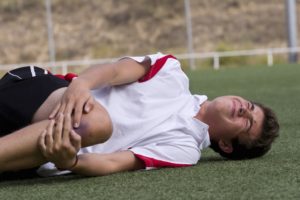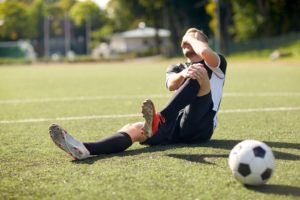 American colleges have earned a reputation for having high tuition fees. The tuition and miscellaneous fees in private college institutions alone averaged at $35,676 for the current school year.
American colleges have earned a reputation for having high tuition fees. The tuition and miscellaneous fees in private college institutions alone averaged at $35,676 for the current school year.
Fortunately, many colleges offer scholarships to students. Some private, high-value colleges even provide scholarships or financial aid for every single freshman that enrolls. The National Association of College and University Business Officers notes that only 12 percent of US freshmen pay full college tuition fees.
College athletic scholarships are one such type of aid. It’s also one of the hardest to qualify for and maintain because athletes are one serious injury away from having their college funding taken away.
The Hazards of High School Sports
A select number of student-athletes receive college athletic scholarships each year. Less than half of the total student-athletes across the US in 2012 received such scholarships. High school student-athletes need to work harder to catch the eye of recruiters and earn their scholarship slot. But the push to excel can come at a price.
When not careful, these young college scholarship hopefuls can over-exert and injure themselves in their quest to hone their skills. In fact, 90 percent of student-athletes experienced some kind of sports-related injury.
Proper Equipment and Precautions
High school football players have a threefold greater risk of getting hurt than athletes on any other level. Common sports injuries include muscle strains, ligament sprains, and broken or fractured bones. These injuries are likely to affect their face or head, too.

Damage Control Mouthguards, a company that advocates better protection against sports injuries through its products, says that better equipment, safety precautions, and professional guidance would help reduce the chances of sports injuries.
Wearing the right equipment and using it properly may prevent or reduce the likelihood of those injuries. Proper athletic footwear counts, as well. Appropriately fitting protective gear helps athletes take better care of their bodies, such as:
- Protective pads and guards (for the knee, shin, elbow, neck, chest, or shoulder)
- Mouth guards
- Face guards
- Helmets
- Protective cups
- Athletic tapes
These reduce physical impact and pressure when playing contact sports. Protective gear for the head and face, in particular, lessens the risk of concussions and traumatic brain injuries.
Having a professional athletic trainer on the team is another deterrent to sports-related injuries. An athletic trainer can improve the detection of head injuries, cases of dehydration, and other sports-related health issues. They also ensure that the student-athletes are following the right training regimen and don’t overexert themselves.
Fighting the Pressure to Play
Student-athletes can be stubborn and ignore their health and safety. Some downplay their injury to play even while injured. Many feel pressure to continue playing so they don’t “let the team down” or abandon them during “an important game.” In some cases, a parent may complain to the coach about benching their child and insist on letting them play while injured.
School sports coaches and athletic trainers make sure their student-athletes don’t put their safety on the line for a single game. Insisting on playing can worsen a minor injury. It may become a more serious injury that may affect their chances of receiving an athletic scholarship.
